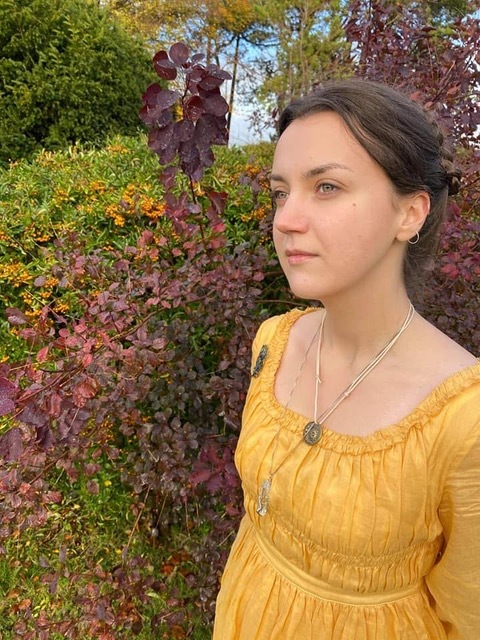Welcome to SPACE, our adult continuing education program which offers interactive monthly courses for personal enrichment! Learn more here.
Dr. Anna Milon
SPACE Preceptor
Fascinated by all things fantastical, mythological, and occult
Anna is a PhD researcher at the University of Exeter with a thesis on the Horned God in
fantasy fiction and Live Action Role Play.
[see full bio...]

Current and Upcoming Modules
July 2025
Highlighted Modules
All Modules
Meeting the Horned God of the Witches
Lecture-based • Low intensity
The Horned God, alongside being modern paganism's most popular deity, enjoys a rich heritage in speculative fiction and popular culture. In this module, we will explore his ancient (and modern) origins, his appearances in both esoteric and popular literature, and his surprising role as an environmental figure. Throughout the module, students will gain familiarity with the four core figures that make up the Horned God (Pan, Cernunnos, the Sorcerer of Trois Freres, and Herne the Hunter), and key narratives associated with him. They will also have an opportunity to ponder the complex web of influences between modern paganism and speculative fiction.
This module builds on the work of Margaret Murray and the module 'The Witch-Cult Hypothesis', but does not require prior knowledge of the material covered there.
This module builds on the work of Margaret Murray and the module 'The Witch-Cult Hypothesis', but does not require prior knowledge of the material covered there.
The Witch-cult Hypothesis and Its Afterlives
Mixed Lecture/Discussion • Low intensity
Imagine a witch. Perhaps, she is a solitary crone, living in a cottage on the outskirts of the village, in equal measures reviled and grudgingly respected by the villagers for her knowledge of midwifery and healing herbs. Perhaps, she is a self-possessed attractive young woman, persecuted by an oppressive authority for her feminist outlook. Perhaps, she is sexually liberated, she conducts strange rituals tied to the land’s fertility, she speaks of the Old Faith as a secret knowledge passed on in secret alongside the official religion. This image of the witch owes much to Margaret Murray’s Witch-cult Hypothesis, an idea that people accused of witchcraft in the medieval and early modern period in the Western world, were the inheritors of a prehistoric fertility cult, which survived as a covert practice alongside Christianity for millennia. Despite being rejected as academically spurious, Murray’s work continues to be incredibly influential for practitioners of modern witchcraft and in popular culture.
In this course, we will take a close look at Murray’s claims, and place them in a historical and cultural context. We will venture outside the academic setting to read witchcraft handbooks and genre fiction, where the witch-cult hypothesis continues its fascinating afterlives.
In this course, we will take a close look at Murray’s claims, and place them in a historical and cultural context. We will venture outside the academic setting to read witchcraft handbooks and genre fiction, where the witch-cult hypothesis continues its fascinating afterlives.
The Witch in Fact and Fiction
Discussion-based • Low intensity
The witch contains a multitude of meanings, from victim to agent of political resistance to a paragon of magical power. While the witch is overtly present in modern media, her origins are often obscured. Is the witch always female? Where does her magic come from? And who devised the eight annual pagan festivals? This module uses Steve Hutton's Raven's Wand fantasy novel (and Book 1 of his Dark Raven Chronicles series) as a starting point to discuss how witches are depicted in fiction and history, and what witches themselves have to say about that.
The Dark Raven Chronicles offer an engaging overview of the main trends for depicting witches in speculative fiction. On our journey through the book, we will discuss what historical details and popular assumptions the author draws on, and how they compare to the lives of people accused of witchcraft in the past, and those who identify as witches today.
The Dark Raven Chronicles offer an engaging overview of the main trends for depicting witches in speculative fiction. On our journey through the book, we will discuss what historical details and popular assumptions the author draws on, and how they compare to the lives of people accused of witchcraft in the past, and those who identify as witches today.
